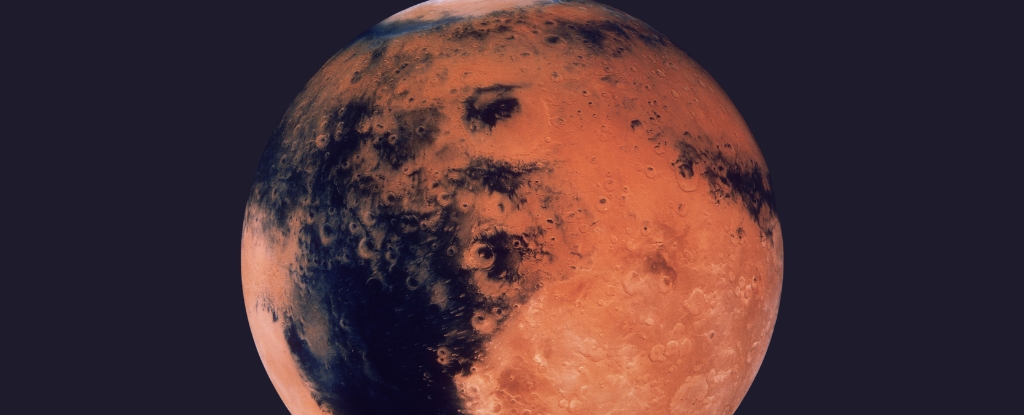Toxic Mars Dust: A Hidden Threat to Future Astronauts
As humanity prepares for its next giant leap—sending astronauts to Mars—scientists are uncovering new challenges that could jeopardize the health and safety of future explorers. Among these dangers is an unexpected yet pervasive hazard: toxic Martian dust. Recent research from the Keck School of Medicine at the University of Southern California suggests that the fine, abrasive dust covering the Red Planet could pose serious respiratory and long-term health risks for astronauts.

Caption: A Martian dust storm captured by NASA’s Mars Reconnaissance Orbiter. These storms can blanket the planet for months, exposing astronauts to hazardous dust particles.
The Composition of Martian Dust
Unlike Earth’s dust, which is often composed of organic matter and minerals softened by erosion and water, Martian dust is a product of billions of years of dry, violent weathering. The planet’s surface is covered in iron oxide (rust), silicates, and perchlorates—a class of chemicals known to be toxic to humans. - Iron Oxide (Fe₂O₃): Gives Mars its reddish hue but can cause lung irritation similar to that seen in miners exposed to iron-rich dust. - Silicates: Sharp, glass-like particles that can scar lung tissue if inhaled. - Perchlorates: Highly reactive compounds that disrupt thyroid function and may increase cancer risk. These components make Martian dust far more hazardous than lunar dust, which already caused "lunar hay fever" in Apollo astronauts.
How Martian Dust Storms Amplify the Danger
Mars is infamous for its planet-wide dust storms, which can last for months and reduce visibility to near zero. These storms lift vast amounts of fine particles into the thin atmosphere, increasing the likelihood of dust entering habitats, spacesuits, and even astronauts’ lungs. - Static Electricity: Martian dust is highly charged due to low humidity, making it cling stubbornly to surfaces. - Long-Term Exposure: Unlike short lunar missions, Mars expeditions could last years, increasing cumulative exposure risks. A 2018 study published in Nature found that perchlorates in Martian soil become even more toxic when exposed to UV radiation—meaning astronauts could face heightened risks during solar flares.
Potential Health Effects on Astronauts
Research from the Keck School of Medicine highlights several concerning health impacts:
1. Respiratory Problems
Inhaling fine Martian dust could lead to pulmonary fibrosis, a scarring of lung tissue that reduces oxygen absorption—similar to conditions seen in coal miners.
2. Neurological Risks
Perchlorates may interfere with thyroid hormones, which regulate metabolism and brain function, potentially causing cognitive decline over time.
3. Skin and Eye Irritation
The abrasive nature of Martian dust could cause dermatitis and corneal abrasions, especially if it infiltrates habitats.
4. Increased Cancer Risk
Iron oxide and perchlorates are known carcinogens, raising concerns about long-term exposure. [IMAGE_2] Caption: A simulated Martian dust chamber used in research to study its effects on human cells. Scientists are working to understand the full extent of the risks.
Mitigation Strategies: How NASA and SpaceX Are Preparing
Space agencies are already developing solutions to minimize dust exposure:
1. Advanced Air Filtration Systems
Future Mars habitats may use HEPA filters combined with electrostatic precipitation to remove dust from the air.
2. Dust-Resistant Spacesuits
New suit designs aim to prevent dust from entering seals, possibly using magnetic repulsion or self-cleaning materials.
3. Robotic Cleaning Drones
Autonomous robots could decontaminate surfaces before astronauts return from extravehicular activities.
4. Medical Countermeasures
Researchers are exploring antioxidant treatments and thyroid-protective drugs to counteract perchlorate toxicity.
Lessons from Earth: Mining and Industrial Safety
Mars dust hazards share similarities with terrestrial occupational risks, such as: - Black Lung Disease (Coal Miners) - Silicosis (Construction Workers) - Asbestos-Related Illnesses Studying these cases helps scientists model Mars dust risks and develop better protective measures.
The Ethical Dilemma: Should We Delay Mars Missions?
Some experts argue that until dust-related health risks are fully mitigated, human missions to Mars should be postponed. Others believe that with proper precautions, the benefits of exploration outweigh the dangers.
Conclusion: A Challenge That Must Be Overcome
Martian dust is more than just a nuisance—it’s a serious health hazard that could undermine the success of future missions. However, with ongoing research and technological innovation, scientists are confident that solutions will emerge. As we stand on the brink of interplanetary travel, understanding and mitigating these risks will be crucial to ensuring the safety of the first humans to walk on Mars. The journey to Mars is not just about reaching another planet—it’s about surviving and thriving in an environment fundamentally hostile to human life. By addressing the dust problem now, we take one more step toward making that dream a reality. [IMAGE_3] Caption: An artist’s depiction of a future Mars habitat with dust mitigation systems in place. Protecting astronauts from toxic dust will be key to long-term survival. Would you volunteer for a Mars mission knowing these risks? Share your thoughts in the comments!